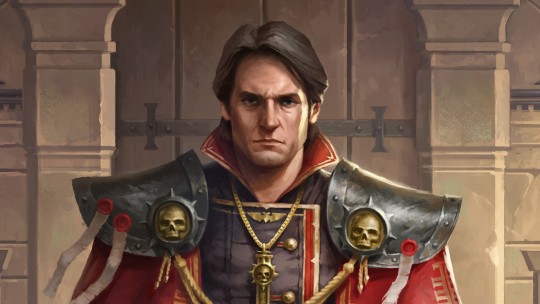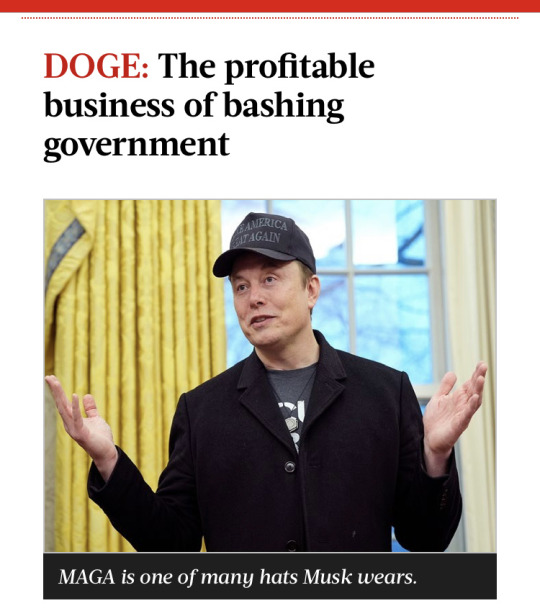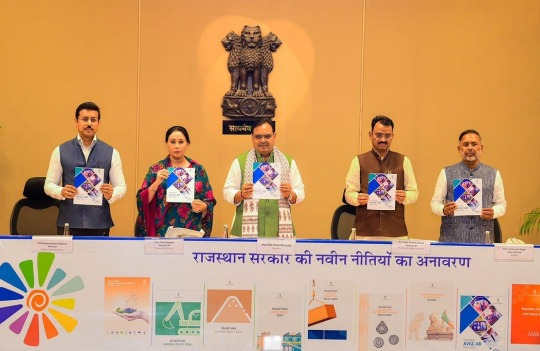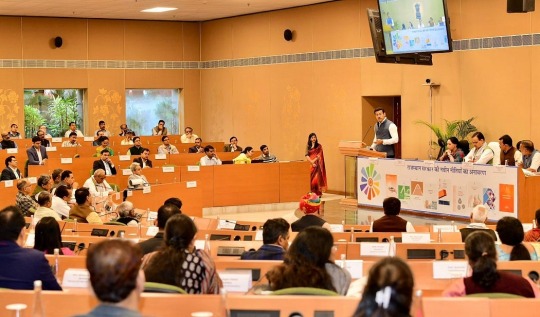#Seed Subsidy
Explore tagged Tumblr posts
Text
रबी फसलों के लिए सरकार का बड़ा तोहफा, किसानों को मिल रही 50% सब्सिडी पर बीज
किसानों को आत्मनिर्भर बनाने की दिशा में उत्तर प्रदेश सरकार की नई पहल लखनऊ। उत्तर प्रदेश के किसान रबी फसलों की तैयारी में जुट गए हैं। इस बार राज्य सरकार ने खेती को सस्ता और लाभकारी बनाने के लिए किसानों को गेहूं, चना, जौ और सरसों जैसे रबी फसलों के उच्च गुणवत्ता वाले बीज 50% सब्सिडी पर उपलब्ध कराने की घोषणा की है। क्या है बीज सब्सिडी योजना? प्रदेश सरकार की यह पहल किसान कल्याण मिशन के तहत शुरू की…
#Discount on Seeds for Farmers#Farmer Welfare Mission#Rabi Crops Subsidy#Seed Subsidy#UP Government Seed Subsidy Scheme#Uttar Pradesh Seed Subsidy#Wheat Seed Subsidy
0 notes
Text
Green Rotta Seeds : 50 శాతం సబ్సిడీతో రైతులకు పచ్చిరొట్ట విత్తనాల పంపిణీ
0 notes
Text
Inside KALRO’s Mkulima Shops: The Impact of KALRO’s Certified Seed Distribution
Discover KALRO’s Mkulima Shops across Kenya, offering certified seeds, climate-smart seedlings, and agricultural resources to boost farm productivity and sustainability. Mkulima Shops by KALRO provide farmers with affordable access to clean planting materials, certified seeds, and expert knowledge for improved crop yields and climate resilience. Boost your farm’s output with certified seeds from…
#Agricultural Innovation#agricultural knowledge#Agricultural Research#Agricultural technology#certified seeds#clean planting materials#climate change adaptation#Climate resilience#Climate-Smart Agriculture#climate-tolerant seedlings#crop diseases#Crop management#crop productivity#crop varieties#disease-free seedlings#drought-tolerant varieties#farming inputs#farming resources#food production#Food security#high-yield crops#Kalro#kenya farming#Kenya Plant Inspectorate Service#KEPHIS certification#Mkulima Shops#Muguga Research Station#Nyota bean variety#seed quality#seed subsidies
0 notes
Text
Friends, Musk is trying to downplay the chaos he’s creating by saying it’s much the same as the cost-cutting efforts of the Clinton administration. “What DOGE is doing is similar to Clinton/Gore Dem policies of the 1990s,” he posted on his X platform. Rubbish. I cut costs in the Clinton administration. The contrast with what Musk is doing couldn’t be sharper. As secretary of labor, I took the Department of Labor down from 18,500 employees to 16,600 — but did it without any layoffs. No chainsaws. No meat-axes. And we were careful to improve the services we were providing the public. For example, when people lost jobs in an industry that was shrinking, we devised a way to get them job-training and job-search assistance in addition to unemployment insurance. This helped move them into new jobs faster — which also saved the government over $1 billion a year in unemployment payments. We plowed that $1 billion back into job-training and job-search assistance, making the whole economy work better. In Musk’s attack on the federal workforce, thousands of federal workers have been fired without warning. Or they’ve been offered fake “deferred resignation” buyouts that were never authorized by Congress and may not be legal. Entire agencies have been gutted without legislative authorization, forcing judges to intervene. Our “Reinventing Government” effort was authorized by bipartisan congressional legislation. We worked carefully over several years to identify areas where government could be more efficient, notifying Congress of what we were doing. But the Republicans who control Congress today have allowed Musk to race ahead without them, even though the Constitution states that the legislative branch approves spending and federal law prohibits the president from cutting programs Congress has authorized without its permission. Clinton sought that permission, and Congress accepted $3.6 billion in cuts he proposed. We also involved federal workers, because they knew better than anyone what could be improved and how best to do it. We introduced performance standards, we encouraged our workers to embrace the internet, and we gave out awards to employees who came up with ways to cut red tape and improve service. “There was a tremendous effort put into understanding what should happen and what should change,” said Max Stier, president of the Partnership for Public Service, which seeks to improve the federal workforce. “What is happening now is actually taking us backwards.” We were deliberative and careful. Musk is the opposite. Musk sees government workers as the enemy — as costs to be cut. We saw government workers as assets to be developed, our partners in getting better services to the public more efficiently. Musk also calls people who benefit from government programs the “parasite class.” Presumably that’s why he’s eager to cut back Medicaid. But Medicaid’s beneficiaries aren’t parasites. Half of them are children. Oh, but if we’re talking about people who depend on government, Musk is the biggest “parasite” of all. Over the years, Musk and his businesses have received at least $38 billion in government contracts, loans, subsidies, and tax credits, often at critical moments, helping seed the growth that has made him the richest person in the world. That he views public servants as his enemy and the people who benefit from public programs as “parasites” tells you all you need to know about Elon Musk. When you hear Musk say his effort is similar to what I and others did in the 1990s, know he’s lying. When you see him call people who benefit from public programs “parasites,” know he’s a hypocrite. Thoughts?
5K notes
·
View notes
Text
While they contribute little to society, welfare ranchers on public lands demand a lot in the form of subsidies whose scope is a testament to their outsize power and influence. It’s estimated the state and federal largesse to the industry amounts to between $500 million and $1 billion a year, all of it funded generously by the taxpayer. This includes below-market grazing fees for cows and sheep, fence construction, road building and maintenance, cattle guards, forage improvement and seeding programs, poisoning of unwanted vegetation, forest clearing, stream diversions, water projects such as dams, pipelines, aqueducts, stock ponds and troughs, the monitoring of livestock health, and control of predators and other mammalian and avian pests deemed a threat to the industry. The U.S. Department of Agriculture operates a specialized hunting and trapping unit—referred to by the Saboteur as “hired killers”—that slaughters tens of thousands of animals each year to aid public lands stockmen, including coyotes, beavers, and prairie dogs. Ranchers also receive generous federal and state tax write-offs for every cow they graze, along with reduced state property taxes for their private deeded lands. They are additionally ��blow-jobbed,” as the Saboteur put it, by the very agencies that are supposed to be preventing their overstocking and overgrazing of public lands. The Forest Service and the Bureau of Land Management are the primary culprits in this charade of regulation, in which it appears the cowboys run the show and the bureaucrats are their puppets. The industry is thus provided all kinds of preferential treatment and survives on the dole because in the arid conditions of the West, where the climate conspires against cattle production, it cannot do otherwise. “Western cattlemen are nothing more than welfare parasites,” wrote author Edward Abbey, the literary father of the eco-sabotage movement in the United States, who also observed that cattlemen “survive by hiding behind the cheap mythology of the ‘Cowboy’: literally, a boy who looks after cows.” Abbey was hardly alone in coming to this conclusion. Conservative pundit George Will opined that an inner-city mother on public assistance was “the soul of self-reliance compared to a westerner who receives federally subsidized range privileges.” The industry, naturally, wants ever more privilege. The primary advocacy group of ranchers who exploit the public domain is the Public Lands Council, which is funded and staffed by the National Cattlemen’s Beef Association, a political and cultural giant in the annals of lobbying. Every few years, the Public Lands Council issues a policy document to outline priorities for Congress and the White House. Katie Fite, an ecologist with the nonprofit Wildlands Defense in Boise, calls it the “Welfare Rancher’s demand letter.” “The Big Hats basically want super-duper extra special status for every welfare ranching permit holder,” she told me in an email, “because if you have herds of cows or sheep you are a Lord.” Among the common demands: the general annihilation of prairie dogs, a keystone species already 98 percent gone throughout the West but which ranchers still consider a pest; the stripping of Endangered Species Act protections for the trifling number of remaining grizzly bears and for “all species of wolves” in the United States; and rollbacks of key provisions of the National Environmental Policy Act, which requires environmental impact assessments of all commercial activities on federal lands, including ranching operations. The Public Lands Council has also sought to amend the Wild Free-Roaming Horses and Burros Act so that wild horses can be killed because they compete for forage with cows. “They want wild horses in the West pretty much GONE,” Fite wrote me. “The Endangered Species Act rendered meaningless/GONE. They want a free hand to grossly pollute water. They attack just about everything good or positive with public lands and the environment.”
1 April 2025
109 notes
·
View notes
Text
Briarpatch

"Rose" © Sandra Duchiewicz, accessed at her deviantArt here
[It's been a long while since I posted a unique monster intended for the Age of Monsters campaign. And clearly there's still interest--my precis for that campaign, and the article about how the Mythos deities fit into it, are still getting likes.
Briarpatch is a character whose seeds (hah) have been planted in several other entries, such as Dr. Shiny and the Vermilion Mother. My inspirations came from all over the place. The sexy, spooky plant girl art of Sandra Duchiewicz was always something I wanted to incorporate. There's a growing idea in ecological and archeological circles that plants domesticated humans as much as the other way around. And I wanted to make a version of Poison Ivy who is genuinely evil.]
Briarpatch CR 27 NE Plant
This woman is beautiful, but alien, with chlorotic skin like the surface of a diseased leaf, and flower petals in place of hair. A collar of brambles grows from her neck and extends into long, thorny vines. She has piercing yellow eyes and an appraising expression.
The Elder Goddess Shub-Nugganoth has many epithets, but her most famous is “Black Goat with a Thousand Young”. In truth, her spawn number far more than one thousand. The creatures known simply as dark young are the most common of her progeny, but unique individuals are her offspring as well. One of these is Briarpatch, a green woman laden with occult intelligence and a profound disgust for urbanization. It is Briarpatch’s goal to see cities crumble and mortal civilizations reduced to decentralized subsistence farming once more, and she is going to use plants as her tools to achieve this.
Unlike many evil creatures of a druidic nature, Briarpatch does not disdain farming. Far from it; she believes humanity exists to serve plants, and that by distancing themselves from the soil, they have betrayed their roots. As such, she both exalts farming and farmers while simultaneously using domestic plants as weapons. Sometimes this is as elaborate as encouraging farmers to plant crops that will use more water and resources than the environment can support, forcing governments into subsidies and increasingly desperate acts to avoid famine. Sometimes this is as simple as distributing seeds of man-eating plants mixed in with garden plants or birdseed. Briarpatch’s cult includes a number of neutral farm-folk, who see her as salvation to their local communities, even as the nation-states that collect their taxes suffer as a body with a parasite does. Her cult often refers to her as the Pale Lady, especially among outsiders.
Briarpatch’s domain is the Forest of Veils in eastern Ustalav, and she communes and coordinates with the mythos horrors that live there. She is allied with the Vermillion Mother and Diceid as a coven of divinities obsessed with invasive species and reshaping ecosystems. She and the Vermillion Mother have a sexual relationship, and treat Diceid as something like a nephew or son. Briarpatch has an entitled personality and considers herself Shub-Nugganoth’s favorite child. She is convinced that if she does enough to deform society in the Inner Sea region, her mother will favor her with a promotion and transform her into an emissary Great Old One, similar to the relationship between Yog Sothoth and Tamir at’umr. Whether this ambition is achievable or is merely one of the Pale Lady’s delusions is hard to say.
Briarpatch rarely participates directly in combat, but when she does, she is a terror to behold. Due to her occult origins, she has access to a wider array of spells than a typical green man. She uses these to inflict overwhelming euphoria or grotesque physical transformations. Sometimes both simultaneously. If she actually wants to kill, rather than toy with her victims, she combines powerful area of effect spells with her tendrils and thorns. Briarpatch is acutely aware that she can still be slain permanently, and will retreat from a battle that turns against her to recuperate and plan revenge.
Briarpatch CR 27 Variant eruphyte green man XP 3,276,800 NE Medium plant (augmented, shapechanger) Init +16; Senses darkvision 60 ft., greensight 60 ft., lifesense 60 ft, low-light vision, Perception +30, thoughtsense 60 ft.
Defense AC 54, touch 36, flat-footed 41 (+12 Dex, +1 dodge, +13 insight, +12 natural, +6 armor) hp 663 (34d8+510); regeneration 20 (deific or mythic) Fort +34, Ref +23, Will +24 Defensive Abilities wilderness insight; DR 15/epic and slashing; Immune ability damage, ability drain, daze, electricity, petrification, plant traits, stagger; SR 37 Offense Speed 40 ft., climb 40 ft. Melee 2 slams +46 (1d8+21/19–20 plus 1d6 acid and absorb magic), 6 vines +46 (2d6+21 plus grab) Ranged 6 thorns +41 (2d6+21/19-20) Space 5 ft., Reach 5 ft. (30 ft. with vines) Special Attacks absorb magic, constrict (2d6+15), grab (Colossal), thoughtspear (17d8, DC 39) Spell-Like Abilities (CL 26th; concentration +37) Constant—pass without trace, speak with plants At will—plant growth, transport via plants 3/day—summon plants 1/day—awaken Druid Spells Prepared (CL 20th; concentration +33) 9th—antipathy (DC 32), extended control plants (DC 32), foresight, greater siege of trees, rival’s weald (DC 33), telekinetic storm (DC 32) 8th—euphoric tranquility (DC 31), horrid wilting (DC 31), mass cure serious wounds, stormbolts (DC 31), sunburst (DC 31) , vinetrap (DC 31) 7th—quickened cure moderate wounds, heal (DC 30), greater scrying, transmute metal to wood, waves of ecstasy (DC 30), waves of exhaustion 6th—antilife shell, greater dispel magic, green caress (x2, DC 30), mass inflict pain (DC 29), primal regression (DC 29) 5th—baleful polymorph (DC 29), cure critical wounds (DC 28), death ward, quickened ray of enfeeblement (DC 24), synapse overload (DC 28), extended thorn body, wall of thorns 4th—arboreal hammer, command plants (DC 27), confusion (DC 27), dispel magic, explosion of rot (DC 27), freedom of movement, strong jaw 3rd—cure moderate wounds (DC 26), excruciating deformation (DC 27), protection from energy, quench (DC 26), spike growth (DC 26), thorny entanglement (DC 27), vampiric touch 2nd—alter self, barkskin, fog cloud, harvest season, resist energy, warp wood (DC 26), wilderness soldiers 1st—cure light wounds (DC 24), entangle (2, DC 25), faerie fire, longstrider, snowball (x2), touch of the sea 0—create water, detect magic, guidance, light
Statistics Str 44, Dex 35, Con 40, Int 35, Wis 36, Cha 33 Base Atk +25; CMB +42 (+46 grapple, +44 sunder); CMD 85 (87 vs. sunder) Feats Combat Reflexes, Craft Staff, Craft Wondrous Item, Defensive Combat Training, Diehard, Dodge, Endurance, Extend Spell, Greater Spell Penetration, Improved Critical (slam), Improved Initiative, Improved Sunder, Power Attack, Psychic Sensitivity (B), Quicken Spell, Spell Focus (transmutation), Spell Penetration, Stand Still Skills Acrobatics +44 (+48 jumping), Appraise +26, Bluff +40, Climb +54, Disguise +40, Diplomacy +40, Fly +30, Intimidate +43, Knowledge (arcana) +46, Knowledge (geography, history, religion) +41, Knowledge (nature) +46, Linguistics +19, Perception +30, Sense Motive +42, Spellcraft +46, Stealth +44, Survival +42, Swim +35, Use Magic Device +44 Languages Abyssal, Aklo, Common, Daemonic, Druidic, Infernal, Mi-Go, Sylvan, Zern, telepathy 100 ft.; speak with plants SQ bardic knowledge +29, change shape (Colossal or smaller tree [tree shape]), deific, green empathy +45, occult gifts
Ecology Environment any forests Organization unique Treasure staff of heaven and earth, belt of physical perfection +4, headband of mental superiority +4 (Knowledge [arcana], Use Magic Device], amulet of mighty fists +4, wings of flying, bracers of armor +6, ring of the ecclesiarch, ring of mind shielding, rod of empowered spell (normal), deliquescent gloves, 11,000 gp worth of material components and miscellaneous treasure
Special Abilities Absorb Magic (Ex) When Briarpatch strikes a creature with her slam attack, she immediately attempts to absorb one magical effect from the target. Treat this as a targeted dispel magic (CL 20th), with Briarpatch preferring to target effects that prevent his vines’ grapple attempts, like freedom of movement. When Briarpatch absorbs magic in this way, she regains a number of hit points equal to double the level of the spell effect she absorbed. Deific Briarpatch grants divine spells to worshipers. This does not require any specific action on her behalf. Briarpatch grants access to the domains of Evil, Plant, Strength, and Weather and to the subdomains of Decay, Growth, Resolve, and Seasons. Her favored weapon is the sickle. If a druid worshiping Briarpatch chooses to take a domain, the druid must choose the Plant domain, regardless of alignment. Her holy symbol is that of a feminine face made of leaves and rose petals, facing to the left. Green Empathy (Ex) This ability functions as the druid’s wild empathy, save that the green man can only use this ability on plant creatures. A green man’s green empathy check bonus is equal to his HD plus his Charisma modifier (+43 for the typical green man). Occult Gifts (Ex) As the daughter of Shub Nugganoth, Briarpatch has abilities of an occult nature, and blurs the line between plant and aberration. She has the class skills of an aberration, although her total skill ranks are still those of a plant. She gains Psychic Sensitivity as a bonus feat, and adds psychic spells from the Abomination, Pain and Psychedelia psychic disciplines to the list of druid spells she can prepare. Lastly, she gains the benefits of her wilderness insight ability in any environment not subject to a dimensional lock effect, as alien spirits whisper these insights to her as much as natural plant life. In exchange, Briarpatch does not have the green caress aura of a typical green man. Spells Briarpatch can cast spells as a level 20 druid. She does not gain a domain, or other druid abilities such as an animal companion, unless she takes levels in the druid class. Summon Plants (Sp) Three times per day as a swift action, Briarpatch can summon any combination of plant creatures whose total combined CR is 20 or lower. This otherwise works like the summon universal monster rule with a 100% chance of success and counts as a 9th-level spell effect. Thorns (Su) Briarpatch’s thorns are ranged touch attacks with a range increment of 120 feet. A creature damaged by her thorn moves at half speed and can’t take 5-foot steps, fly, or use air walk, either naturally or magically, until the target or another creature pulls out the thorn as a full round action that provokes attacks of opportunity. Thoughtspear (Su) Once per hour as a standard action, Briarpatch can direct a blast of disorienting mental energy at a creature within 120 feet. This attack deals 17d8 points of damage, and the target cannot attempt Knowledge skill checks for 1 minute afterwards. A target that succeeds a DC 39 Will save reduces the damage by half and negates the skill disruption. This is a mind-affecting effect and the save DC is Intelligence based. Vines (Ex) Briarpatch can extend up to six thorny vines from her body to attack foes. These act as primary natural melee attacks that deal bludgeoning and piercing damage and have a reach of 30 feet. Wilderness Insight (Ex) Briarpatch gains an insight bonus to her AC and CMD equal to her Wisdom bonus.
#briarpatch#monster npc#green man#plant#plant girl#monster girl#age of monsters#cthulhu mythos#pathfinder 1e#pathfinder rpg#poison ivy
159 notes
·
View notes
Text
It all started under a duvet held up by an oar
Not so long ago I emailed Chris Tester, the voice of Heinrix van Calox in Owlcat’s recently released CRPG Rogue Trader, and asked if he would like to sit for an interview with me. Having some experience in interviewing people I like, most famously Oscar winner and all-around sweetheart Eddie Redmayne, this was not a completely nerve-wracking endeavour. And within a day of sending my email, Chris said yes. And what a pleasure it was interviewing him: Chris was so generous with his time, that the agreed upon 30 minutes turned into 50 minutes as we brushed upon many topics from his start as a theatre actor to his first voice-over role in a video game to his recently discovered hobby of playing D&D. Of course, we also spoke about all things Warhammer 40k, his new found fame brought on by voicing Heinrix and the insights he could share about the character.
I will publish this interview in three parts over the next week in text form and with the accompanying audio file (the audio quality is not spectacular but tumblr limits uploads to 10MB). If you quote or reshare, please quote me as the original source.
Part 2 of the interview
Part 3 of the interview

Fran: Thank you very much for taking your time.
Chris Tester: That's no problem. No problem at all.
F: So then let's start. You graduated in 2008.
CT: I did. Yes.
F: You started out as a stage actor. Did you always want to become a stage actor or an actor in general? Tell us a bit about your career.
CT: I always wanted to be a stage actor. Yes, as soon as I knew that I wanted to be an actor, which probably wasn't until I was a teenager. But yeah, my first passion was always the stage, and that was kind of borne out in my career. I would have been open to TV and film of course, if it had come along, I'm a huge fan of TV and film as well, but I never got an audition for any TV or film work.
I think I literally did about three short films in my 10, 12 years of actually professionally acting, and it is one of those industries where the more you do of one thing, the more you seem to find yourself doing the same thing to a degree. So yes, watching Shakespeare from an early age was one of my first passions.
And that was what first planted the seed of wanting to do it myself. The whole aspect of live performance is still something that I'm very passionate about. Up until 2020, when the world changed, I was trying to do two or three theatre shows a year, but since 2020, I haven't been near a stage and I doubt right now, especially with the way that the UK theatre scene is going, that I'm going to be back on stage anytime soon. I am resigned to that, but at some point in my career, I know I will be on stage again, because I can't live without it, but only for the right thing, both financially, but more importantly, creatively.

F: Your production company is currently on hiatus?
CT: I was the producer of a theatre company, which was run and was the baby of the director of the company, a guy called Ross Armstrong, who's one of the most talented writers and directors that I've ever worked with. I was helping out with a lot of the administration stuff so that he could still put me in plays. Instead of creating my own work because I'm not a very good writer or the best writer in the world, I support those people who will write me good parts. So yes, it is currently on hiatus, but never say never, we would always be looking to get back. It's difficult right now. It's difficult for all of us, because arts council subsidy, that way of being able to fund stuff, is drying up. We were doing a national tour of the UK when we were doing that [with the support of a subsidy]. There's even less money, there's even more people. I won't bore you with anything more than that, but it's kind of tough. We'd like to come back, but in the right way, and that's tricky to negotiate.
F: It's always hard as a stage actor to earn a living.
CT: Well, I've been spoiled by voice-over as well, and whereas when I was in my 20s and 30s then you're all about your art. And of course, I'm still all about my art, but I'm also about my wife and my cat and the mortgage and the bills and wanting to have nicer things to a degree as well. I've come to terms with that and voice-over does facilitate that as well as it opens you up to different roles and working with different people. So, I can't complain.
F: It's quite similar with making a living as a writer, because with a steady income you get used to a certain standard of living and once you have obligations and bills to pay, I think the stress on your mental health being creative and having all the stresses of regular life thrust upon you brings with it a challenge.
CT: It's a cliche we can very easily fall into: if I'm suffering, then it means I'm an artist. And that's not necessarily very true. It very often means that the art that we create only reflects one aspect of our lives, and it's usually a very tortured one. I am also about having wider experiences and broadening myself out. Whereas I think when I was in my twenties, I was thinking a bit more like: Oh, I'll experience the world and life through my art and just purely through my art. Whereas now necessarily I need to have a life outside of it as well, and then I can justify like I have the life so that I can feed my art or not, whatever. You know, I'll be a better artist by having a bit of a life outside of it. Maybe.
F: But that's what your twenties are for.
CT: Yeah, indeed.
F: Doing the crazy stuff, doing the band stuff
CT: Yeah, yeah, exactly. So, there was certainly an aspect of that in my twenties.

F: So, what brought you to voice acting or voice-over work initially?
CT: Money. Video game stuff is kind of sexy and cool, and I'm a gamer, so that's important. Before I was a video gamer, I was a board gamer and off the back of that, I was a voracious video gamer, partly because I wasn't very good at team sports at school. I was always the person who was picked last in the football team. So that becomes part of your identity for better or worse. But video games, I was pretty good at, not amazing, but I was pretty good at, and I enjoyed it. And it gave me a different form of escapism as well, and off the back of that I always had an interest in them.
So, the very first voiceover job was a video game: Dark Souls, which is quite a big franchise. At that time, I was your very typically jobbing actor. My acting agent came in and said: I got something for you. And so, I went in with that. But it was only in 2016, 2017 that I realised it was something that you could actually do yourself. People had recording studios at home and they were contacting people directly, not just going through agents. Because I'd basically written to the same 20 voice agents in the UK, mainly in London for like eight years in a row and not received anything. So, you keep knocking on those doors hoping.
Before I'd even graduated from drama school, I'd burnt a CD and made these cases with my headshot on it and sent them all off at what at the time felt like great personal expense and didn't get anything for eight years in a row. So, I was a bit like, I'm obviously doing something wrong, but I don't really know what, because I'm doing these workshops and getting good feedback. Then I found out through a couple of online courses, that there were ways and means of doing it myself, and that was a bit of a game changer for me, and within six months of having started, I was earning more through voice work than the bar job and the box office job that I was doing combined. Within six months, I was kind of like: “I gotta quit because I'm actually holding myself back from things.” So that was quite a big shift.
F: Somewhere you said, you started out under a duvet and with an oar.
CT: Yeah. On my website, I do have an image of it. [Dear reader, I could not locate this elusive photo] I literally had to take the duvet off my bed and put it into the living room, which was the quietest space in my then shared flat. I also had to wait until after one flat mate had watched TV and another one had used the table that had their washing on it. One of my flat mates had stolen an oar from some night out and that was perfect in order to be able to erect it over my head and the duvet as a frame.
I did probably the first four or five months of voice recording like that. Probably about 10, 15 voiceover jobs that I actually got paid for, I was using that because it worked well enough. Since then, I've gone through various different iterations of a setup in the bedroom, to a setup in the hallway, to my current setup. In 2020 we moved to our first house, and this is the spare bedroom which I've had converted into a studio, which means my cat can be here asleep on me or near me getting fur everywhere, but it's fine. I can thrash around and I've got natural light to work in at the same time, which I find quite important. [Pictured below Chris' current setup.]

F: Very pretty. That's good. Guide us through a typical day of yours, if you like.
CT: Oh, sure. I mean, there is no typical day. And yet, and yet, and yet. A typical day for me is, because I am spending the vast majority of the day sitting in this room or somewhere close to this room, because I may need to record at short notice, because the vast majority of jobs are quite short notice. My priority is exercise for mental health more than anything. I've got some weights at the bottom of the garden, and I will get up first thing, and I will go there and I will do that after breakfast. And that's my minimal routine of physical activity done.
And then I'll come back, and this is so rock and roll. Now what I do is, I spend like an hour on LinkedIn. And that's what you dreamed of as a creative person. Isn't it as an actor? I spend time on LinkedIn regularly every day, because it's a really good networking place for a lot of my types of work, and first thing in the morning, I'm a bit mentally sharper. So that's when I come up with a quick post that may be inspired by a bit of content that I've made elsewhere. That probably takes about 20 minutes and then I spend another 45 minutes to an hour engaging with people and saying hi and introducing myself and asking questions, whether that's with video producers or game developers or documentary makers or pretty much anything and everything. There are a lot of people who are active at that time. And so I do it.
And then after that, if I already have some recording lined up, then I'll prioritise mid-morning, because I've warmed up physically a bit more then, and I'm focused. So, you're going through the scripts, annotating the scripts, recording the scripts, editing the scripts. But then there could be live sessions at any time within that as well. I try to keep hours from nine till six. But occasionally, like with Rogue Trader, that was recorded at various different times of the day because we had people in New York, we had people in mainland Europe, and we had people in the UK. So all different time zones, so that can happen at any time.
And then I try to do other kinds of bits and pieces of marketing whenever I've got free time to. I do use really exciting productivity hacks, like time blocking. Again, not something that as a creative individual, I was like: Oh God, this gets me so excited, because it doesn't, but it works. It's finding a system that works for you, but still has a certain kind of flexibility and fluidity. I'm trying to make sure that I get outside of the house, and that kind of stuff.
Recently, over the last year, I’ve started doing audiobooks as well. That long form type of thing is quite nice to be able to dip into because sometimes you don't record for two, three days. You don't get the work. Nothing’s coming in. So, you’re marketing, but it kind of connects you back to the performance side of things to go: I can do a few chapters and you know, that kind of thing. So that's probably it. I try to formalise it, but you know, every voice actor’s day is radically different. There are people, some of the biggest names, going into different studios every week or every day. I very rarely, despite being based in London, I very rarely go into external studios. Like I would say 99 percent of the work I just do from home.

F: So how do you find the right voice for the specific type of voiceover work you do, maybe start with how did you find Heinrix's voice?
CT: Thankfully, Owlcat sent through quite a detailed casting breakdown. So, you get a picture, and that's pretty crucial, as well as a short bio, in terms of the background of the character, but not too much, because you have to sign an NDA, a non-disclosure agreement. But even if you do sign an NDA, I think developers are always slightly hesitant of giving you too much info about the game because things could still be changed. But I think I did get a picture of Heinrix, if not in the first audition, then certainly on the second one. From that you immediately think about the physicality and what might affect the voice, and there was also some direction in terms of what they were looking for. Anybody who has heard the character and me, they do not sound radically dissimilar. There's not a transformative process that I needed to go through, other than his sense of authority and the space that he takes up and the sureness that he has in that he has a kind of divine right from the emperor, so that level of confidence being brought through.
The other part of the audition was about the void ship [the Black Ship] that he'd been raised in and the horrors that he'd seen. And you as the actor have to do the detective work to go like this is showing another side, the more vulnerable side, the side that underpins all of his life choices up to this point. It's essentially playing the opposite to a degree. So it was kind of knowing when to let those elements bleed through a little bit. I think I had probably about a page worth of scripts, quite a lot of script actually to audition with.
But I don't like to listen back to it a lot, because I think you get into your head. My biggest thing is stage work where it's ephemeral. You say it once and it could be different the next night. The whole point is that there's no one definitive way of doing things. Not quite the same with voice acting, where it's being recorded and you've got to get used to hearing it back. But I try not to overthink it. Just like record it two or three times with different impulses and then review and go like, those two seem pretty contrasting. I'll send those along and hope and then never hear anything back unless I do.
128 notes
·
View notes
Text

Elon Musk's staggering conflicts of interest are on full display at the Federal Aviation Administration, said Andrew Perez and Asawin Suebsaeng in Rolling Stone. Musk's so-called Department of Government Efficiency "has overseen an unprecedented purge of the federal workforce." That purge extends to the FAA, the agency charged with overseeing Musk's SpaceX.
But that's just the start of the issues. Musk said last week that SpaceX was sending 4,000 Starlink satellite internet terminals to the FAA. Agency staff have been ordered to find money for a Starlink deal, intended to replace the FAA's $2.4 billion contract with Verizon. So, the man hired to reduce the deficit is starting by handing contracts off to his own company. "It's a federal crime for government employees to use their offices to benefit themselves," said Thomas G. Moukawsher in Newsweek. But who will stop Musk? Not Trump. The White House says that it's up to Musk himself - the world's richest man - to "decide when he has a conflict of interest."
And there is likely to be more money to come: The Commerce Department is looking at an overhaul of rural broadband that will make Starlink eligible for subsidies. Federal money "helped seed the growth that has made him the world's richest person." Now Musk is responsible for slashing budgets "at all seven of the agencies where his companies have ongoing contracts," strangling potential competition. "No one in American history has combined this many conflicts of interest across the globe with this much state power," said Tim Murphy in Mother Jones. It's impossible to disentangle Musk's personal interests from his government role. Does he "want to replace government workers with Al because it will improve service or because he's in the Al business?" Does he want to remove regulations "because of some fine-tuned understanding of bureaucratic machinery or because they have penalized him and his companies?"
THE WEEK March 14, 2025
CORRUPTION.
NO ACCOUNTABILITY.
21 notes
·
View notes
Text
Been a hot minute since I rambled about MaxSteel(2013) and-
What the fuck is wrong with Forge Ferrus-
Excuse my language
But seriously, I know it's been a point of discussion before, like a lot, but why the hell is Forge so hell bent on Steel being evil for the majority of the series????
Like Steel resting wouldn't actually make him evil.
Forge, you half-wit ;
STEEL WAS A FULTY ULTRALINK
Steel, as far as I'm concerned, was an anomaly, the 1 in 1000 product that is not like the others who were all programmed to be loyal to Makano, Steel wasn't. He questioned what they were doing, even if it was Jim that prompted it. Because here's the thing if the seed of doubt wasn't already there, Steel wouldn't have done what he did.
If Steel reset, he wouldn't default to 'glory for Makano' because that isn't a part of his programming.
On top of that
WHY KEEP THE FACT MAX IS HALF ALIEN A SECRET?!
even if Forge wasn't so hostile to Steel, and told them some things, I think at some point, Max and Steel would have questioned why Max had TURBO powers.
Because you can't expect someone to believe 'oh yeah, you were exposed to highly volatile energy when you were younger and now you're body generates the stuff' explanation forever.
Like wtf how dose being exposed to energy just cause ones body to start making it? Because that would imply human experimentation at some point.
And the whole 'we made Jim a promise not to tell you...' thing is also bullshit.
Yes they were trying tk keep there world to someone who subsidy died but I'm pretty sure they would be okay with you breaking that promise if keeping it is doing more harm than good.
WHICH IT WAS
YOU DON'T KEEP A SECRET THAT WILL ACTIVELY HARM SOMEONE OR CAUSE THEM TO SEEK ANSWERS IN A WAY THAT MAY HARM THEM!
you see it 'Uncle Sam Wants You!' Max and Steel go behind Forge's, and subsequently N-Teks back and joins the military for what they think is a raid on Dredds base. Max and Steel trust Colonel because he shows them some respect, and a level of trust Forge hasn't in a while.
And I also think Max’s lack of father figure plays a part in his actions that episode.
Yes I think we all more or less agree on some level that Forge was the closest thing Max had to a dad.
But when your father figure is acting fishy, not trusting you, and seemingly disappointed, and then another older man shows up and gives you a compliment and a pat on the back. Safe to say you're going to latch on the guy being nice than the one being a bit of a diçƙ.
Had Forge been just a wee bit more honest, I don't think Steel, but more importantly, Max would have felt the need to join up with another group.
Tldr: If Forge just communicated like a proper human, then Max probably wouldn't be so traumatized and not get basically groomed that one EP['Uncle Sam Wants You!']
40 notes
·
View notes
Text
The USA
Sorry for the radio silence; I'm still processing how 51% of my country thinks it's okay to elect a bigoted, misogynistic felon to the presidency.
This election is a reminder that half of this country is so fucking hateful that they're willing to elect someone that makes us a laughing stock around the globe while those who bought and paid for his campaign gut democracy.
Are you doing better than you were four years ago? Of course not. You were getting subsidy checks Biden pushed through a Republican congress post-pandemic.
Wages went up for essential workers, and that expense got passed on to you because corporations aren't going to short to their shareholders - and the President can do nothing about that without holding companies accountable to regulation - which our new president has no intention of doing.
The next two years:
My adult children will lose their healthcare when he and his Republican senate quash the Affordable Care Act - but hey, so long as you have a few extra bucks at the end of the month for cigs and beer, what do you care?
Some states will be able to seize the medical records of women and mothers and use those records to fine or put them in jail (abortion, IVF, getting your trans teen the care they need) - but hey, none of those things affect you personally, so fuck 'em and hey, women aren't even human, am I right you newly registered voting Gen Z fellas?
College debt, infrastructure repairs, social programs - kiss all that goodbye because fucking the planet up is a small price to pay so you can get gasoline for under $2.99. Oh, and that Latino spouse? All it takes is one call from a disgruntled 'Murican and our new INS will be there with 'post-citizenship deportation review' papers.
Wars? How easily everyone forgets that Ukraine is at war right now because your guy failed to help him when Russia flooded his country with separatists. You think he's going to stop arming Israel? Where's the money in that?
Xenophobia may have worked when the USA was 100% self-sufficient in the 1900s, but it cannot be done in this day and age - but hey, going back to the old days is what it's all about, right?
Living in a hurricane or natural disaster prone state? You better pray to whatever G*d you worship that nothing happens in the next 2 years because the Pubs have the Senate and the presidency - no more FEMA funds and 'emergency handouts.'
Tariffs instead of taxes on the rich? Zero-sum situation. Guess how many companies import basic things just to make the shit you eat and use daily? Monsanto is no longer an American company, most farmers in the USA 'import' their seed, though because lack of corporate regulation has allowed them to destroy all farms that don't use their seed. While we're on the subject of tariffs, any foreign company can say, "We just won't sell to you, America." What's the backup plan? Oh, right, he has none.
Prices will rise, wages will stagnate, tariffs won't work, so guess who gets billed for that deficit? Not the wealthy—they spent billions electing this assclown, and there's no way they're investing one damned penny in the rest of us.
But hey, they know you can take it because you voted to have all this...You voted for all of the above at the expense of literally half your fellow countrymen.
If Kamala won, you would've lost NOTHING. Your worst case scenario under her presidency is that you would've been running in place financially while those you consider morally or racially beneath you, might've been gotten ahead a few steps.
So yeah, 51% of my country would rather watch it all burn down than suffer anyone they consider less of a human being, be given an equal chance.
13 notes
·
View notes
Text
Effective March 20, 2025, China will place massive tariffs on Canadian goods. Aquatic products and pork will face a 25% tariff, while other items like rapeseed oil (canola), peas, and oil cakes will see a 100% tax. China is also implementing a 100% tariff on any imported electric vehicles and a 25% tariff on Chinese aluminum and steel.
“Canada does not accept the premise of China’s investigation, nor its findings,” a statement from the Canadian government read. “China’s non-market policies and practices that artificially lower production costs and distort markets. Canada remains open to engaging in constructive dialogue with Chinese officials to address our respective trade concerns.”
Canada first slapped a 100% tariff on Chinese EVs in October 2024, as no one can compete with Chinese EV manufacturers. A few days later, Canada hit China with a 25% tariff on aluminum and steel. All of this happened around the same time that the European Union and the US also placed tariffs on Chinese goods as the West collectively felt that China had an unfair trade advantage due to cheap goods and labor, as well as government subsidies.
Canadian exports to China totaled $$31.1 billion in 2023, with exports from Canada coming in at $59.9 billion. Exports to China have increased by over 6% in the last five years. Gold, petroleum, and rapeseed are Canada’s main exports to China, while China primarily sends Canada cars, computers, and broadcasting equipment. Rapeseed is Canada’s second-largest acreage crop by acreage and China is the largest market for Canadian rapeseed.
The Canola Council of Canada believes canola seed oil and meal exports to China reached C$4.9 billion last year. Canola meal exports came in at 2 million metric tonnes, valued at C$920.9 million, while canola oil exports hit 15,351 metric tonnes with a C$20.6 million value. Pea exports to China reached C$303.6 million last year, fish and seafood came in at C$1.3 billion, and pork at C$486.6 million.
7 notes
·
View notes
Text
सस्ते दाम पर मिलेंगे लहसुन के बीज, कराना होगा रजिस्ट्रेशन, जानिए सबकुछ
उत्तर प्रदेश के किसानों के लिए खुशखबरी है! सरकार ने प्रदेश में लहसुन की खेती को बढ़ावा देने के लिए एक नई योजना की शुरुआत की है, जिससे किसानों को सस्ते में बीज मिलेंगे और उनके उत्पादन को बढ़ाने में मदद मिलेगी। इस योजना के तहत, किसानों को राष���ट्रीय बागवानी अनुसंधान एवं विकास प्रतिष्ठान (NHRDF) से लहसुन के बीज उपलब्ध कराए जाएंगे, जिसकी कीमत 370 से 390 रुपये प्रति किलोग्राम के बीच होगी। इससे किसानों…
#Garlic Cultivation#Garlic cultivation scheme in UP#Garlic seed subsidy for farmers#Online registration horticulture UP#Subsidy for garlic farmers UP#UP government garlic farming scheme
0 notes
Text
Musk’s lies, lies, and more lies
He’s lying about what we did in the Clinton administration, lying when he says public servants are our enemies, and lying that beneficiaries of public programs are parasites.
ROBERT REICH
FEB 27
Friends,
Musk is trying to downplay the chaos he’s creating by saying it’s much the same as the cost-cutting efforts of the Clinton administration.
“What @DOGE is doing is similar to Clinton/Gore Dem policies of the 1990s,” he posted on his X platform.
Rubbish.
I cut costs in the Clinton administration. The contrast with what Musk is doing couldn’t be sharper.
As secretary of labor, I took the Department of Labor down from 18,500 employees to 16,600 — but did it without any layoffs. No chainsaws. No meat-axes.
And we were careful to improve the services we were providing the public.
For example, when people lost jobs in an industry that was shrinking, we devised a way to get them job-training and job-search assistance in addition to unemployment insurance. This helped move them into new jobs faster — which also saved the government over $1 billion a year in unemployment payments.
We plowed that $1 billion back into job-training and job-search assistance, making the whole economy work better.
In Musk’s attack on the federal workforce, thousands of federal workers have been fired without warning. Or they’ve been offered fake “deferred resignation” buyouts that were never authorized by Congress and may not be legal.
Entire agencies have been gutted without legislative authorization, forcing judges to intervene.
Our “Reinventing Government” effort was authorized by bipartisan congressional legislation. We worked carefully over several years to identify areas where government could be more efficient, notifying Congress of what we were doing.
But the Republicans who control Congress today have allowed Musk to race ahead without them, even though the Constitution states that the legislative branch approves spending and federal law prohibits the president from cutting programs Congress has authorized without its permission.
Clinton sought that permission, and Congress accepted $3.6 billion in cuts he proposed.
We also involved federal workers, because they knew better than anyone what could be improved and how best to do it.
We introduced performance standards, we encouraged our workers to embrace the internet, and we gave out awards to employees who came up with ways to cut red tape and improve service.
“There was a tremendous effort put into understanding what should happen and what should change,” said Max Stier, president of the Partnership for Public Service, which seeks to improve the federal workforce. “What is happening now is actually taking us backwards.”
We were deliberative and careful. Musk is the opposite.
Musk sees government workers as the enemy — as costs to be cut.
We saw government workers as assets to be developed, our partners in getting better services to the public more efficiently.
Musk also calls people who benefit from government programs the “parasite class.” Presumably that’s why he’s eager to cut back Medicaid. But Medicaid’s beneficiaries aren’t parasites. Half of them are children.
Oh, but if we’re talking about people who depend on government, Musk is the biggest “parasite” of all.
Over the years, Musk and his businesses have received at least $38 billion in government contracts, loans, subsidies, and tax credits, often at critical moments, helping seed the growth that has made him the richest person in the world.
That he views public servants as his enemy and the people who benefit from public programs as “parasites” tells you all you need to know about Elon Musk.
When you hear Musk say his effort is similar to what I and others did in the 1990s, know he’s lying. When you see him call people who benefit from public programs “parasites,” know he’s a hypocrite.
5 notes
·
View notes
Text
Why India is the largest exporter of spices in the world
India has long been known as the "Land of Spices," a title well-earned due to its rich history, diverse climate, and vast agricultural expertise. The country stands as the largest exporter of spices in the world, supplying premium-quality spices to international markets across continents. From ancient trade routes to modern-day exports, India's spice industry has flourished, making it a global leader.

If you are looking for the top spices export company in India, it is important to understand why India dominates this sector. Let us explore the key reasons why spices export from India continues to thrive.
1. Favorable Climate and Diverse Geography
One of the biggest advantages India has in spice production is its diverse agro-climatic conditions. From the cool hills of Kerala to the arid lands of Rajasthan, India cultivates a wide variety of spices in different regions. This enables the country to produce almost all major spices, including:
Black Pepper – Often called the “King of Spices.”
Turmeric – Famous for its medicinal and culinary uses.
Cardamom – A premium spice used globally in food and beverages.
Cumin, Coriander, and Fennel – Widely used in international cuisines.
Chili, Ginger, and Garlic – Essential for adding heat and flavor.
With such diversity, spices exporters in India can cater to a wide range of global demands.
2. Rich Heritage and Traditional Farming Practices
India's spice trade dates back over 5,000 years. The country was a key player in the ancient spice routes that connected Asia, the Middle East, and Europe. Over the centuries, traditional farming methods have been refined to produce high-quality spices that maintain their authenticity and aroma. Many best spice exporters in India still use age-old organic farming techniques that ensure the purity of their products.
3. Strong Government Support and Initiatives
The Indian government plays a crucial role in promoting spices export from India through organizations like the Spices Board of India. Various initiatives such as:
Quality control measures
Financial support for farmers
Export subsidies
Promotion of organic and GI-tagged spices
These efforts have strengthened India’s position as a spices exporter in Gujarat and across other states, boosting its global competitiveness.
4. Advanced Processing and Packaging Techniques
To meet international standards, top spices export from India involves rigorous quality control. Many spice manufacturers and exporters use cutting-edge technology for:
Steam sterilization to remove microbial contamination
Cryogenic grinding to retain essential oils
Vacuum packaging to preserve freshness
With such high-tech processing, the top spices export company in India can ensure its products meet global food safety regulations.
5. Expanding Global Market Demand
The demand for Indian spices is growing exponentially worldwide, especially in countries like the USA, UAE, China, Germany, and the UK. Indian spices are used not only in traditional dishes but also in:
Pharmaceutical products
Cosmetics
Organic herbal remedies
Packaged foods and seasonings
This widespread application ensures continuous growth in spices export from India.
6. Competitive Pricing and High Yield
India enjoys a cost advantage due to its vast agricultural lands and large workforce. This allows the best spice exporters in India to provide high-quality products at competitive prices. The country produces a high yield of spices, ensuring a steady supply to international markets.
7. Gujarat – A Hub for Spice Exporters
When discussing spices exporters in India, Gujarat stands out as a key region. The state is a major producer and exporter of:
Cumin
Fennel
Coriander
Mustard seeds
Many spices exporters in Gujarat specialize in processing and trading these products worldwide, contributing significantly to India's spice exports.
8. Sustainable and Organic Spices – A Growing Trend
As consumers become more health-conscious, the demand for organic spices is rising. Indian exporters are capitalizing on this trend by offering pesticide-free, organic-certified spices. Many top spices export from India companies are now focusing on sustainability, ensuring that their farming practices are environmentally friendly.
9. Well-Established Logistics and Supply Chain
The spice industry in India benefits from a strong logistics network. With major ports like Mundra, Kandla, and Chennai handling exports efficiently, spices exporters in India can seamlessly supply spices to global buyers. Well-connected road and rail networks further ensure smooth domestic transportation from farms to processing units.
Conclusion
India's dominance in the global spice market is a result of its favorable climate, rich history, advanced processing, and strong government support. With growing international demand, the largest exporter of spices in the world continues to expand its presence in new markets. Whether you are searching for a top spices export company in India or looking for premium-quality Indian spices, you can be assured of unmatched quality and authenticity.
At Entail Global, we take pride in being one of the best spice exporters in India, offering a wide range of high-quality, organically sourced spices. With a commitment to purity, freshness, and sustainability, we bring the finest Indian spices to the world. If you are interested in sourcing premium Indian spices, contact us today!
#Spices exporters in India#Spices exporter in Gujarat#India#Spices export from India#Best spice exporters in India#Largest exporter of spices in world#Top spices export company in India#Spices#Top spices export from India
3 notes
·
View notes
Text
New Policies of Rajasthan Government Unveiled: Col Rajyavardhan Rathore

Rajasthan, known for its cultural heritage and historic prominence, is making waves with forward-thinking policies designed to usher in a new era of growth and development. Col Rajyavardhan Rathore, a dynamic leader and advocate of progress, has been instrumental in shaping and supporting these initiatives. These policies aim to address critical areas such as economic development, environmental sustainability, social equity, and digital transformation, marking a significant step forward for the state.
A Vision for Progress
The new policies reflect the Rajasthan government’s commitment to fostering innovation, inclusivity, and sustainability. By targeting various sectors, from education and infrastructure to technology and rural development, these initiatives promise a brighter and more prosperous future for all.

Key Policies Unveiled
1. Rajasthan MSME Policy 2024
Micro, Small, and Medium Enterprises (MSMEs) form the backbone of Rajasthan’s economy. This policy aims to:
Provide financial assistance and subsidies to MSMEs.
Simplify regulatory processes to encourage entrepreneurship.
Create employment opportunities, especially in rural areas.

2. One District, One Product (ODOP) Scheme
To boost local businesses and crafts, the ODOP scheme promotes:
Identifying unique products in each district for focused development.
Establishing market linkages and export support.
Providing branding and marketing assistance to artisans and producers.

3. Rajasthan Startup Policy 2024
The state’s focus on fostering innovation is evident through its startup-friendly policies, which include:
Seed funding and incubation support for startups.
Incentives for women-led and rural-based startups.
Establishing innovation hubs across districts.

4. Integrated Cluster Development Scheme
This policy aims to modernize and empower traditional industries by:
Developing common facilities for industrial clusters.
Providing training programs for workers in emerging technologies.
Enhancing infrastructure to attract investments.

5. Rajasthan AVGC-XR Policy 2024
Focusing on the Animation, Visual Effects, Gaming, and Extended Reality (AVGC-XR) sectors, this policy includes:
Setting up AVGC-XR training institutes.
Providing subsidies for software and hardware procurement.
Promoting Rajasthan as a hub for creative industries.

Environmental Sustainability Policies
6. Rajasthan Green Energy Initiative
To combat climate change and boost renewable energy production, the policy emphasizes:
Developing large-scale solar and wind energy projects.
Offering incentives for businesses to adopt green energy solutions.
Encouraging electric vehicle adoption through subsidies.
7. Water Conservation Policy
Addressing water scarcity in Rajasthan, this policy includes:
Promoting rainwater harvesting and groundwater recharge.
Modernizing irrigation systems to improve efficiency.
Encouraging community-driven water conservation efforts.
Social Development Policies
8. Rajasthan Women Empowerment Scheme
Aimed at promoting gender equality, this policy focuses on:
Providing skill training and entrepreneurship opportunities for women.
Ensuring safety and security through improved law enforcement.
Offering financial incentives for girls’ education.
9. Antyodaya Seva Camp Initiative
Launched to mark the successful completion of the BJP government’s first year, this program:
Provides direct access to government schemes and services.
Ensures welfare benefits reach the most marginalized communities.
Organizes awareness drives about social and economic rights.
Education and Digital Transformation
10. Rajasthan DigiSkill Program
To prepare the workforce for a digital future, this program includes:
Training in digital tools, AI, and coding for youth.
Setting up digital labs in schools and colleges.
Offering certifications in high-demand IT skills.
11. Rajasthan Education Excellence Policy
Focused on improving education quality across the state, the policy entails:
Modernizing school infrastructure and integrating digital tools.
Recruiting highly qualified teachers for rural and underserved areas.
Enhancing vocational training opportunities.
Economic Growth and Investment Policies
12. Rising Rajasthan Global Investment Summit
This annual event highlights the government’s commitment to attracting global investments by:
Showcasing Rajasthan’s potential in IT, manufacturing, and tourism.
Facilitating investor-friendly policies and incentives.
Establishing Special Economic Zones (SEZs) for key industries.
13. Rajasthan Export Promotion Policy
Aimed at boosting exports, this policy provides:
Support for exporters through subsidies and infrastructure.
Promotion of Rajasthan’s traditional handicrafts and textiles globally.
Setting up export training centers for budding entrepreneurs.
Col Rajyavardhan Rathore: A Champion of Progress
Col Rajyavardhan Rathore has been a driving force behind these transformative policies. His efforts include:
Advocating for inclusive and sustainable growth.
Encouraging public-private partnerships to enhance infrastructure and investment.
Ensuring that government initiatives are accessible and impactful at the grassroots level.
Impact of the New Policies
Economic Growth
Increased investments in key sectors like IT, renewable energy, and manufacturing.
Growth in MSMEs and startups, creating job opportunities.
Social Development
Enhanced opportunities for women and marginalized communities.
Improved access to education and healthcare.
Sustainability
Progress in renewable energy adoption and water conservation.
Reduced carbon footprint through green energy initiatives.
The Road Ahead
With these policies, Rajasthan is poised to become a leading state in innovation, sustainability, and social equity. The government’s commitment, supported by leaders like Col Rajyavardhan Rathore, ensures that this vision translates into reality. As the state charts its path forward, it sets a benchmark for holistic and inclusive development in India.
2 notes
·
View notes
Text
The UN’s Food and Agriculture Organization coined CSA in 2009 to describe practices aimed at increasing farm resilience and reducing the carbon footprint of a global food system responsible for up to 37 percent of annual greenhouse gas emissions. Since then, however, observers say that CSA has been usurped by the Gates-led corporate alliance, with programs like Water Efficient Maize for Africa serving as green-painted Trojan horses for industry. “CSA is an agribusiness-led vision of surveillance [and] data-driven farmerless farming, [which explains why] its biggest promoters include Bayer, McDonnell, and Walmart,” said Mariam Mayet of the African Centre for Biodiversity. “From a climate perspective, it entrenches the global inequalities of a corporate food regime. There’s no system shift at all.” Octavaio Sánchez, the grizzled director of Honduras’s National Association for the Promotion of Organic Agriculture, contends that policies that promote true resilience must focus on regenerating soils through the use of organic fertilizers, crop rotation, and the preservation of native seeds able to adapt to changing conditions. These are the cornerstones of a global agro-ecology movement that has emerged from the seed and food sovereignty coalitions of the past three decades. The peasant-led agro-ecology movement—with La Via Campesina and AFSA in front—rejects the familiar refrain from agribusiness promoters that it is condemning farmers to permanent poverty and stagnation. The movement’s position is supported by both a growing literature of case studies and the development of scientific agro-ecological practices. When Gates Foundation officers were preparing to launch AGRA in 2006, researchers at the University of Essex published a study showing that agro-ecological practices increased yields by an average of nearly 80 percent across 12.6 million farms in 57 poor countries. The authors concluded that “all crops showed water use efficiency gains,” which led to “improvements in food productivity.” The UN’s High Level Panel of Experts on Food Security and Nutrition recommended in 2019 that governments support agro-ecological projects and redirect “subsidies and incentives that at present benefit unsustainable practices,” a judgment based on similar studies undertaken around the world.
211 notes
·
View notes